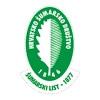
DIGITALNA ARHIVA ŠUMARSKOG LISTA
prilagođeno pretraživanje po punom tekstu
| ŠUMARSKI LIST 7-8/1986 str. 100 <-- 100 --> PDF |
paid to the nourishment of plants in the forest nurseries, as well as those in the poplar and eoniferous plantations. However, investigations in this branch did not follow the needs of forest enterprises, but relied on foreign experience and the experience from agriculture. Insufficient development of investigation in Yugoslavia and insufficient knowledge of theoretic principles in the nutrition of forest trees, resulted in many negative consequences. Primarily, it was the case with the advocated enforcement of calcification in the forest nurseries. More intensive investigations in the field of mineral nutrition of forest trees were initiated in Croatia in 1960 with the establishment of the Yugoslav Institute for Conifers, Jastrebarsko. Within the framework of this Institute, a relatively modern pedological-physiological laboratory was set up. The main characteristics of investigations in this field are experimental wolrk and statistics, and laboratory processing of the achieved results. Nutrition of forest trees in nurseries, plantations and natural stands was investigated. Besides species, dosage and the most suitable time and technique for the application of mineral fertilizers, investigation was made of the influence of various forms of nutrients on the growth of forest trees, microelement nutrition between fertilization and silvicultural interventions, the relation between nutrition and resistance with regard to the influence of unfavourable biotic and abiotic factors, the genetic specificity of mineral, relation between nutrition and fruitfulness, the influence of vegetation fires on the nutritional content in the soil and nutrition of forest trees, the role of mycorhiza in the absorption of nutrients, biological fixation of nitrogen, etc. In addition to the influence of nutrition on the forest tree growth and other practical characteristics, theoretical bases of nutrition were also investigated. The relation between the nutrient content in soil and a plant compared to the growth has been extensively investigated, as well as the circulation of bioelements in forest ecosystems, analyses of methods for determining plant nutrient content in soil and plant, circulation of nutrients in soil, etc. Quite recently investigation has begun to determine the influence of polutants on the physiological changes in forest trees. In the laboratory for the culture of plant cells at the Faculty of Natural Sciences and Mathematics in Zagreb, investigation of the possibility of forest tree propagation in "in vitro" conditions has been going on for some ten years. Coniferous and deciduous species are equally represented in these investigations. The Austrian pine (Pinus nigra Arn.) has been intensively studied. In addition, some other coniferous species have been investigated, such as Californian incense cedar (Calcocedrus decurrens Torr. Florin), coastal sequoia (Sequoia sempervirens Endl. Abies sp.). Vegetative propagation and cloning in the tissue culture has been investigated on a number of deciduous tree species. Some of these species (poplar, wild cherry-tree and birch) have already been thoroughly investigated and the procedures are so weel perfected as to enable fast and mass production of plants. Other species, especially oak or false acaeia, require a substantial investigation in the future. In the field of pedology, most work has been centered on the general pedological investigations and mapping of forest ecosystems, the study of genesis and classification of forest soils, comparative pedological-vegetational investiga |